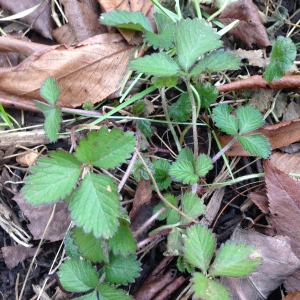
This is a very simple vegetable stew, perfect for a summer evening when a hot meal that isn’t too heavy or complicated is needed. The milkweed can be either added to the stew as is (perhaps chopped into pieces if the pods are large) or briefly blanched first. The flavor of the stew will be perhaps a bit better if the pods are added without preparation, but the cooking time will be longer. Foraging books abound with instructions to boil milkweed in multiple changes of water for lengthy periods of time but all of that is really unnecessary, and usually serves only to ruin the taste and nutritional value of this delicious, wholesome vegetable.
When selecting milkweed pods for this dish, avoid any longer than 2 inches or so and any ones that have particularly tough exteriors. The pods should be firm but not rubbery. Avoid pods that are soft or have obvious slits or discolorations, as the material inside will be dark and bitter.
In a wide, deep sauté pan heat :
2 tbs vegetable oil or other neutral oil or fat
Add and cook until tender and slightly browned :
5 oz onions, diced
Add and cook for one minute or so :
2 tbs field garlic or minced garlic
Add and cook until tender :
2 oz celery, sliced thin
Add and cook until tender :
5 oz bell or sweet pepper, diced
1 chile, diced fine
Add and cook until juices are released :
5 oz tomato, chopped
Add :
1 tsp fennel seeds, toasted
1 tsp cumin seeds, toasted
1 tsp wild parsnip seeds, toasted (optional)
5 oz milkweed pods (see introductory note)
Cook for several minutes, then deglaze with :
1-2 tbs sherry, shao xing wine or cooking wine
Add :
1 cup stock or water
3/4 cup sweetcorn, raw or fermented
Lower heat to simmer and cook until done. Add thickeners or more liquid as necessary.
Garnish with a bit of chopped fresh herb such as parsley, cilantro, basil or monarda.
This is an extremely simple recipe, and benefits from the addition of a dash of this or that as befits your taste and pantry. A little bit of nice olive oil added to the finished dish is quite lovely, as is a little soy or other seasoning sauce drizzled in as the stew thickens. The delicate flavor of milkweed pods (think okra combined with green beans) is best enjoyed in such simple preparations, but can be ruined if too many seasonings are added, so taste before tampering!



